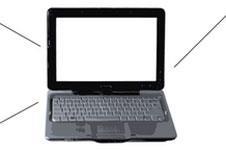ºÃÉ«ÏÈÉúTV management systems give occupants control of M&E equipment at the touch of a button, but their complexity can cause problems
In very simple terms, a building management system (BMS) is a computer-based control system that is used to monitor and control the M&E equipment within a building. They typically incorporate the heating system, air handling and cooling plant, lighting, fire detection and access control, and are usually installed in larger buildings.
A BMS is made up of three key elements. The first is the monitoring devices or sensors used to measure properties such as room temperature. The second is the controlled devices or actuators, such as valves, which can be opened to increase the volume of hot water running through a heating system and, in turn, warming a room. These two elements are connected or networked to the controller – the BMS – which is, in effect, a computer system with specialist software. The BMS receives data from the sensor and, if the values are not within the acceptable thresholds, the BMS tells the controlled devices to adjust to achieve the desired conditions. BMS software can be relatively simple or very sophisticated, allowing remote operation and the constant recording of data, as well as presentation of reports.
A BMS may be specified to improve comfort in a building; reduce energy costs; reduce maintenance; and monitor and control plant centrally or remotely. Guidance on BMS specification and controls is available from BSRIA, CIBSE, BRE and HVCA publications.

The trouble is …
Symptoms that indicate there may be problems with the BMS include unsatisfactory user conditions; for instance, air temperatures that are too hot or cold, excessive energy use or high maintenance costs. However, the source of a problem will not necessarily lie solely with the BMS system or software. Indeed, many problems will be owing to the failure or deterioration of sensors or actuators, in which case they would need adjusting or replacing.
Problems typically relate to the software settings rather than the software itself, which may be a case of operator error or lack of operator training. It is important to take a structured, top-down approach when appraising a BMS problem. This may involve interrogating the BMS for data, interviewing users, or spending time taking supplementary observations to confirm the causes of a problem before making an intervention.
Setting up the BMS to record meaningful data is important to enable early identification of reduced performance or deterioration of conditions. Problems may occur if the BMS records too little data, or there are too few sensors.
Where too much data is collected there may be a higher than necessary pressure on staff time for appraisal and checking. A related issue is setting alarms – it is important to get the balance right between alarms associated with business-critical services plant versus other equipment to avoid overloading maintenance staff. There should be a system of prioritisation in place for alarms.
If energy consumption is higher than expected, the BMS setting should be checked to confirm that the plant operational times are related to the occupancy periods. Set points for air temperature and flow temperature sensors should be checked to ensure they are not too high or too low. The operation of optimum start/stop and weather compensators should be confirmed. If there is still a problem after the BMS setting has been corrected then relevant sensors and controlled devices should be checked and adjusted, or replaced as necessary. If examination of the components of the BMS system does not resolve the issue, then a closer look may be required of the plant, or the overall system design and installation, or maintenance and operational issues.
Wireless signalling may result in occasional weak signals which cause fluctuations in performance. Repositioning may be possible, or replacement with a more powerful signal or a wired connection should resolve this.
When things go wrong …
- Start by ruling out operator error or faulty software settings
- Too few or faulty sensors can result in poor performance or uncomfortable conditions
- Wireless signalling may result in fluctuations in performance
- Check plant operational times tie in with the building’s hours of occupation
Postscript
BLP provides building latent defect insurance and New Home Warranties for dwellings
Specifier 19 September 2008
- 1
- 2
 Currently reading
Currently readingºÃÉ«ÏÈÉúTV pathology: BMS systems
- 3
- 4
- 5
- 6
- 7
- 8
- 9
- 10
- 11
- 12
- 13


































1 Readers' comment